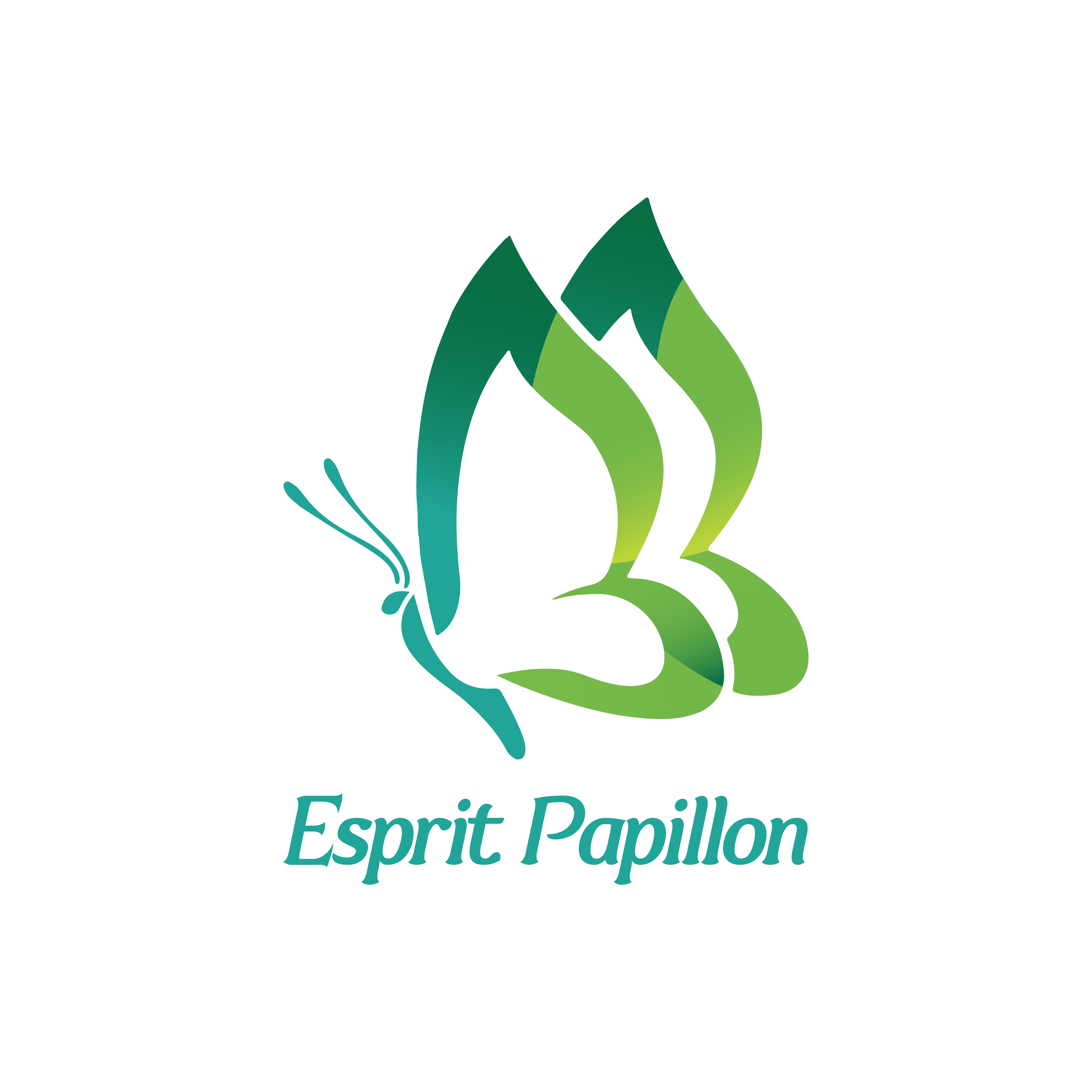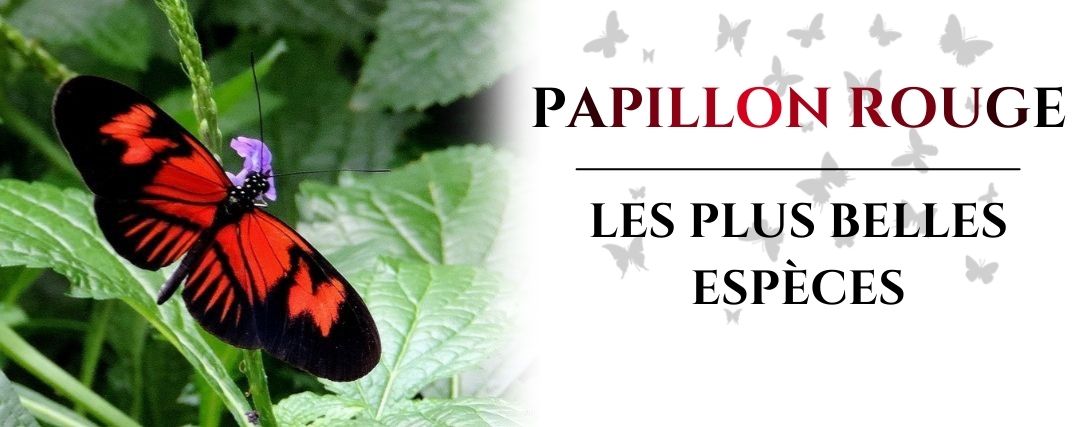Red is a mesmerizing color that often appears alongside black in butterflies. The wings of red lepidoptera exhibit different colors on the underside, creating a superb shimmering effect of changing colors when the insect flutters. Their striking colors make them very eye-catching and pleasant to observe!
Are red butterflies rare?
While they are not the most common butterflies, it is not unusual to come across them, depending on your location. For example, in France, it is relatively common to see the Peacock-du-Jour, although it is becoming rarer over time, like many other butterfly species.
Where can they be found?
Red butterflies are found worldwide except in Antarctica. However, they may not be the most common butterfly color you might encounter.
What do red butterflies symbolize?
In color psychology, the color red symbolizes passion, sensuality, and domination. Depending on the culture, the red butterfly can be a positive or negative symbol. In some cultures, red butterflies indicate a bad omen or anger, suggesting caution when one is seen.
There is also an English myth linking red butterflies to the souls of witches and evil beings. In contrast, some Native Americans believe that a red butterfly symbolizes romance, passion, and a powerful spirit.
The red butterflies are also very striking. Some believe that seeing a red butterfly at the beginning of the year means that the person will be healthy and happy throughout the year.
The most beautiful species of red butterflies around the world
Cethosia biblis

Cethosia biblis is a butterfly species belonging to the family Nymphalidae.
This medium-sized butterfly has a wingspan of approximately 80 to 90 mm. The sexes are dimorphic in this species. Males have bright orange-red wings bordered by black with white spots, while the underwings range from bright red to pale brown interlaced with black and white. This stunning pattern helps disguise the butterfly's shape, while the intense color of the upper wings warns predators of its bad taste, derived from the toxic host plants consumed by the caterpillars. Females have brownish-gray upper wings with black spots and white bands and spots on the black edges.
This species is found from the Indian subcontinent to Southeast Asia and East Asia, extending east to the Philippines and south to Indonesia. It inhabits forests.
Siderone galanthis

Siderone galanthis is a butterfly species in the Nymphalidae family.
This large butterfly has a wingspan of 80 to 110 mm. Its pointed wings display sublime red spots that make it easily recognizable. The forewings have a black background, while the hindwings are brown. The ventral side mimics a dead leaf.
It is found from Mexico to southern Brazil, inhabiting deciduous and evergreen forests up to 900 meters in altitude.
Anartia amathea

Anartia amathea is a butterfly belonging to the Nymphalidae family.
It has a wingspan of approximately 45 mm. Its brown wings feature beautiful red lines, with white spots on the outer parts and red on the lower hindwings.
This species is mainly distributed in South America, and is also found in the Antilles and Panama. It inhabits gardens, roadsides, and meadows.
Heliconius melpomene
![]()
Heliconius melpomene is a brightly colored butterfly that belongs to the Nymphalidae family.
Its coloration co-evolved with a sister species, Heliconius erato, to warn predators of its inedible nature, an example of Müllerian mimicry. This butterfly is mainly black with red patterns and stripes on its wings. It has a wingspan of 60 to 80 mm and is venomous, with the red patterns on its wings serving as aposematism. They resemble those of H. erato. Two features on the underside distinguish H. erato from H. melpomene: H. erato has four red dots where the wing attaches to the thorax, while H. melpomene has three, and the yellowish white band on the underside reaches the hindwing margin in H. erato but ends before the margin in H. melpomene. Pattern variation was studied and parallel evolution was found between these two species.
Heliconius melpomene is found from Central to South America, particularly on the slopes of the Andes. It inhabits open areas and forest edges and is also found near rivers and streams, sharing its range with other Heliconius species.
Cymothoe hobarti

Cymothoe hobarti is a butterfly in the Nymphalidae family with a wingspan of approximately 60 mm. The upper part of its wings is almost entirely covered in a magnificent bright red, with black patterns and scalloped edges.
It is found in Africa, in countries such as the Democratic Republic of Congo, Central African Republic, Uganda, Kenya, and Tanzania. It inhabits lowland and low mountain forests.
Males feed on mud, and both sexes are attracted to fermenting fruit.
Aglais io

Aglais io, more commonly known as Day Peacock, is a medium-sized, colorful butterfly in the Nymphalidae family.
This butterfly has a wingspan of 50 to 55 mm. Its wings are primarily red, with distinctive black, blue, and yellow eyespots at the tips for defense against predators. The underside of the wings is dark brown or black.
It is present in Europe and Asia in temperate climates, extending to Japan. The Day Peacock is resident throughout much of its range, often overwintering in buildings or trees. It appears early in spring, flying from June to early October. It is expanding its range and is not considered threatened.
The Day Peacock is commonly seen in woods, fields, meadows, pastures, parks, and gardens, from lowlands up to 2,500 meters above sea level. It is common in France, regardless of the department.
Known food plants of the European Peacock include nettle (Urtica dioica), hops (Humulus lupulus), and burning nettle (Urtica urens).
Adult butterflies drink nectar from various flowering plants, including buddleia, dandelion, oregano, black elderberry, hempgrass, and clover. They also use tree sap and rotten fruit.





